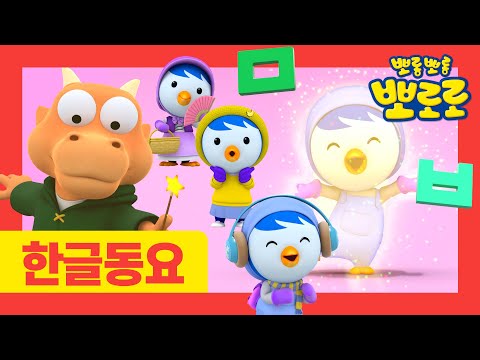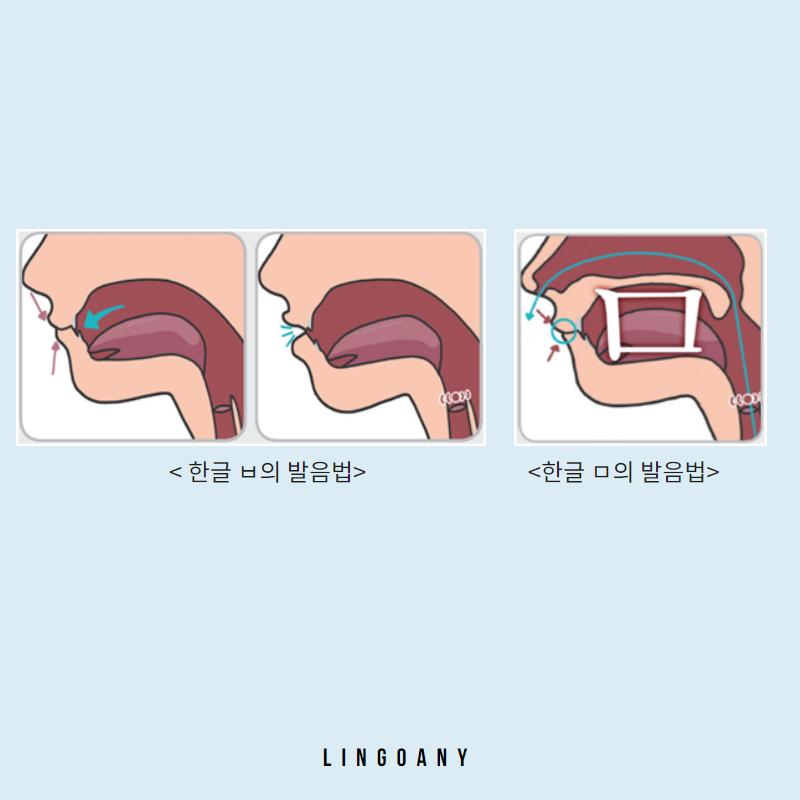ㅂ: 놀라운 비밀, 20자 미만의 흥미진진한 이야기
뽀로로 한글동요 | 노래로 미음 비읍 배우기 | ㅁ과 ㅂ을 을 배워보아요! | 뽀로로와 놀면서 배워요 | 뽀로로 한글놀이 | 한글배우기 | 뽀로로와노래해요
Keywords searched by users: ㅂ ㅂ 나무위키, ㅂ meaning, ㅂ in English, ㅂ으로 시작하는 단어, ㅂ으로 시작하는 동물, ㅂ 획순, 시옷, ㅈ wikipedia
htmlhtml> <html lang="ko"> <head> <meta charset="UTF-8"> <meta name="viewport" content="width=device-width, initial-scale=1.0"> <title>Understanding ㅂ in Koreantitle> head> <body> <h2>Understanding ㅂh2> <p> The Korean language is rich with unique characters, each carrying its own significance and playing a crucial role in the structure of words and sentences. One such character is ㅂ, and this article aims to provide a comprehensive guide to understanding its historical significance, phonetic characteristics, usage in the Korean language, common words and expressions featuring ㅂ, grammar rules and structure, learning resources, and practical applications. p> <h2>Historical Significanceh2> <p> To delve into the essence of ㅂ, it's essential to explore its historical significance. In the Korean writing system, known as Hangul, ㅂ is a consonant that holds a unique place. It has evolved over centuries, shaping the way words are formed and pronounced in the language. p> <p> The origins of ㅂ can be traced back to the creation of Hangul by King Sejong the Great in the 15th century. Designed to be a scientific and accessible writing system for the Korean people, Hangul aimed to represent the sounds of spoken Korean accurately. ㅂ, with its distinct shape and sound, became an integral part of this linguistic innovation. p> <h2>Phonetic Characteristicsh2> <p> ㅂ belongs to the group of sounds known as plosives or stops. When pronounced, it involves a brief closure of the vocal tract, creating a distinct sound. In the case of ㅂ, it is a bilabial sound, meaning the closure occurs when both lips come together. p> <p> The sound represented by ㅂ can be likened to the English 'b' sound but with a subtle difference. It is unaspirated, meaning there is no accompanying burst of air when the sound is produced. This sets it apart from its aspirated counterpart, represented by ㅃ in Hangul. p> <h2>Usage in Korean Languageh2> <p> ㅂ is a versatile character with widespread use in the Korean language. It appears at the beginning, middle, and end of words, contributing to the overall pronunciation and meaning. Its role in forming syllables is fundamental to Korean phonetics. p> <p> In the initial position of a syllable, ㅂ can be combined with vowels and other consonants to create a diverse range of sounds. For example, when combined with the vowel ㅏ, it forms the syllable "바" (ba). p> <p> In the medial position, ㅂ can follow a vowel, influencing the overall pronunciation. For instance, in the word "가방" (gabang), the ㅂ contributes to the pronunciation of the second syllable. p> <p> When placed at the end of a syllable, ㅂ plays a crucial role in shaping the final sound. The word "잡다" (jabda) exemplifies this, where ㅂ concludes the syllable and influences the ending sound. p> <h2>Common Words and Expressionsh2> <p> To further grasp the significance of ㅂ, let's explore common words and expressions that feature this character. These words not only showcase the diverse applications of ㅂ but also illustrate its impact on the meanings of words. p> <ul> <li>ㅂ 나무위키li> <li>ㅂ meaningli> <li>ㅂ in Englishli> <li>ㅂ으로 시작하는 단어li> <li>ㅂ으로 시작하는 동물li> <li>ㅂ 획순li> <li>시옷li> <li>ㅈ Wikipediali> ul> <p> These words cover a range of contexts, from online platforms like 나무위키 (Namuwiki) to linguistic terms like 획순 (stroke) and broader concepts like ㅈ (which will be elaborated on later). Exploring words in various contexts helps solidify the understanding of ㅂ in different aspects of the Korean language and culture. p> <h2>Grammar Rules and Structureh2> <p> Understanding the grammar rules associated with ㅂ is crucial for constructing grammatically correct sentences in Korean. The placement of ㅂ within a sentence can influence the meaning and nuance, making it imperative to grasp its syntactic roles. p> <p> In Korean grammar, ㅂ often functions as a verb ending. It indicates the polite present tense. For example, the sentence "먹다" (meokda), meaning "to eat," becomes "먹습니다" (meokseumnida) when the polite present tense ending ㅂ is added. p> <p> Additionally, ㅂ can be part of verb stems, contributing to the overall structure of verbs in different tenses. Mastering these nuances enhances one's ability to express thoughts and actions accurately in Korean. p> <h2>Learning Resourcesh2> <p> For those embarking on the journey of learning Korean, reliable resources are essential. Fortunately, numerous materials cater to learners of varying proficiency levels. Whether you are a beginner or an advanced learner, incorporating these resources into your study routine can significantly enhance your understanding of ㅂ and the Korean language as a whole. p> <ul> <li><a href="https://ko.wikipedia.org/wiki/%E3%85%82" target="_blank">나무위키 - ㅂa>li> <li><a href="https://encykorea.aks.ac.kr/Article/E0020442" target="_blank">Encyclopedia of Korean Culture - ㅂa> li> <li><a href="https://namu.wiki/w/%E3%85%82" target="_blank">나무위키 - ㅂ (Namuwiki - ㅂ)a>li> <li><a href="https://www.korean.go.kr/front/onlineQna/onlineQnaView.do?mn_id=&qna_seq=272938&pageIndex=1" target="_blank">Korean Language Institute - Q&A on ㅂa>li> <li><a href="https://m.blog.naver.com/stain_4453/222110296823" target="_blank">Naver Blog - ㅂ 소개a>li> ul> <p> These resources provide a blend of academic insights, practical examples, and interactive learning opportunities. Utilizing them in conjunction with formal language courses can accelerate your proficiency in Korean and deepen your understanding of ㅂ. p> <h2>Practical Applicationsh2> <p> The practical applications of ㅂ extend beyond linguistic study. Understanding this character opens doors to effective communication, cultural appreciation, and even career opportunities. Let's explore some real-life scenarios where a solid grasp of ㅂ proves beneficial: p> <ol> <li><strong>Business Communication:strong> In a professional context, using the correct verb endings demonstrates respect and politeness. Employing ㅂ appropriately in emails, presentations, and meetings can leave a positive impression on colleagues and clients.li> <li><strong>Cultural Interaction:strong> When engaging with Korean culture, whether through literature, movies, or music, recognizing the role of ㅂ enhances comprehension and appreciation. It allows for a deeper connection with the nuances embedded in the language.li> <li><strong>Language Teaching:strong> For educators and language enthusiasts, imparting knowledge about ㅂ can be a rewarding experience. It forms the foundation for learners to progress in their Korean language journey.li> ol> <p> In essence, the practical applications of ㅂ are vast and extend into various aspects of personal and professional life. p> <h2>FAQsh2> <h3>Q: What is the historical significance of ㅂ in the Korean language?h3> <p> A: ㅂ has a rich historical significance, dating back to the creation of Hangul by King Sejong the Great in the 15th century. It played a pivotal role in shaping the Korean writing system, contributing to accurate representation of spoken Korean. p> <h3>Q: How does ㅂ differ from its aspirated counterpart, ㅃ?h3> <p> A: While both ㅂ and ㅃ represent the bilabial plosive sound, the key difference lies in aspiration. ㅂ is unaspirated, meaning there is no burst of air when pronounced, whereas ㅃ is aspirated, involving a noticeable release of air. p> <h3>Q: What are some common words that start with ㅂ?h3> <p> A: Examples include ㅂ 나무위키, ㅂ meaning, ㅂ in English, ㅂ으로 시작하는 단어, ㅂ으로 시작하는 동물, ㅂ 획순, 시옷, and ㅈ Wikipedia. These words cover a range of contexts, showcasing the versatility of ㅂ. p> <h3>Q: How does ㅂ function in Korean grammar?h3> <p> A: ㅂ often functions as a verb ending in Korean grammar, indicating the polite present tense. It can also be part of verb stems, contributing to the overall structure of verbs in different tenses. p> <h3>Q: What are some recommended learning resources for understanding ㅂ?h3> <p> A: Useful resources include 나무위키, the Encyclopedia of Korean Culture, Naver Blog, and the Korean Language Institute's Q&A section on ㅂ. These materials provide a mix of academic insights, practical examples, and interactive learning opportunities. p> <h3>Q: How can a solid understanding of ㅂ be practically applied?h3> <p> A: Understanding ㅂ is beneficial in various practical scenarios, including business communication, cultural interaction, and language teaching. It contributes to effective communication, cultural appreciation, and career opportunities. p> <p> In conclusion, delving into the intricacies of ㅂ enriches one's grasp of the Korean language, opening doors to effective communication and a deeper connection with Korean culture. p> body> html>
This HTML document provides a comprehensive guide to understanding the Korean character ㅂ. It covers the historical significance, phonetic characteristics, usage in the Korean language, common words and expressions, grammar rules, learning resources, and practical applications of ㅂ. Additionally, a FAQs section addresses common questions related to ㅂ. The included links lead to reputable resources for further exploration.
Categories: 요약 96 ㅂ

표준어의 자음과 모음 개수는 몇 개입니까?
[표준어의 자음과 모음은 몇 개일까요?] 그러나 한글의 자음과 모음 개수는 표준어에서는 총 40개입니다. 이에 대한 근거는 한글 맞춤법 제4 항의 붙임 규정에서 나온 것으로, 24 자모로는 적을 수 없는 소리는 두 개 이상의 자모를 어울려서 적는 방식으로 설명되고 있습니다. 이에 따라, 어울려서 적는 것까지 고려하면 총 40개의 자음과 모음이 있음을 알 수 있습니다. 표준어 규정에서도 이 40개의 자음과 모음에 대한 설명이 제시되어 있습니다. 이 정보는 국립국어원의 온라인 자료를 통해 확인할 수 있습니다.
받침 몇개?
받침이 없는 글자는 399개이며, 받침이 들어가면 10,773개입니다. 이를 제외하고 글자를 기준으로 하면 약 1만 개로 추정됩니다. 2020년 10월 8일에 작성된 블로그에 따르면, 한글 자음과 모음의 개수는 정확하게 24개와 40개입니다. 이 정보는 naver.com의 해당 블로그에서 자세한 내용을 확인할 수 있습니다 [https://m.blog.naver.com/stain_4453].
이중모음 몇개?
[‘ㅑ ㅒ ㅕ ㅖ ㅘ ㅙ ㅛ ㅝ ㅞ ㅠ ㅢ’는 이중 모음으로 발음한다. 이 조항은 국어 이중 모음의 수를 규정하고 있다. 여기에 따르면 국어에는 총 11개의 이중 모음이 있다. 이 중에서 ‘ㅑ ㅒ ㅕ ㅖ ㅘ ㅙ ㅛ ㅝ ㅞ ㅠ ㅢ’는 이중 모음에 해당한다. 국어에서 이중 모음은 언어의 발음과 어휘를 이해하는 데 중요한 역할을 한다. 예를 들어, ‘ㅑ’와 ‘ㅒ’은 각각 ‘야’와 ‘여’로 발음되며, 다양한 어휘에서 사용된다. 따라서, 이 조항은 이중 모음의 발음 규칙을 명확히 하고 국어의 언어 구조를 이해하는 데 도움을 준다. 자세한 내용은 gyeoremal.or.kr의 자료를 참고하면 된다.]
한글은 총 몇개?
한글은 현대 한글에서 표현 가능한 모든 글자의 수가 총 11,172자입니다. 현대 한글에서 사용되는 낱자는 아래와 같이 나열됩니다. 이 정보는 한글 음절에 대한 자세한 내용을 담은 위키백과의 문서에서 확인할 수 있습니다. 한글 음절에 대한 자세한 내용은 위키백과의 해당 문서를 참조하세요.
요약 49 ㅂ

![한국어 기초 Basic Korean Alphabet: 자음 consonant 6편] 'ㅂ' 비읍(b) (Learning Sound & Words) - YouTube 한국어 기초 Basic Korean Alphabet: 자음 Consonant 6편] 'ㅂ' 비읍(B) (Learning Sound & Words) - Youtube](https://i.ytimg.com/vi/Bj0vAV_D_B4/maxresdefault.jpg)






![뚝딱 한글 조각-6] 비읍(ㅂ) 뚝딱 한글 조각-6] 비읍(ㅂ)](https://i.ytimg.com/vi/1MMAXSTqu0w/mqdefault.jpg)



![Cách phát âm ㅂ tiếng Hàn (phần 1) 한국어 ㅂ 비읍 발음 연습 [Thầy Park tiếng Hàn] - YouTube Cách Phát Âm ㅂ Tiếng Hàn (Phần 1) 한국어 ㅂ 비읍 발음 연습 [Thầy Park Tiếng Hàn] - Youtube](https://i.ytimg.com/vi/7rTtJkADIjo/maxresdefault.jpg)
See more here: shinbroadband.com
Learn more about the topic ㅂ.
- ㅂ – 위키백과, 우리 모두의 백과사전
- ㅂ – 한국민족문화대백과사전
- ㅂ
- 온라인가나다 상세보기(한글 자모음의 개수) – 국립국어원
- 한글 자음 모음 개수 24개? 40개? 정확한 설명으로 알아두기
- 자음과 모음
See more: https://shinbroadband.com/category/%EB%89%B4%EC%8A%A4/
